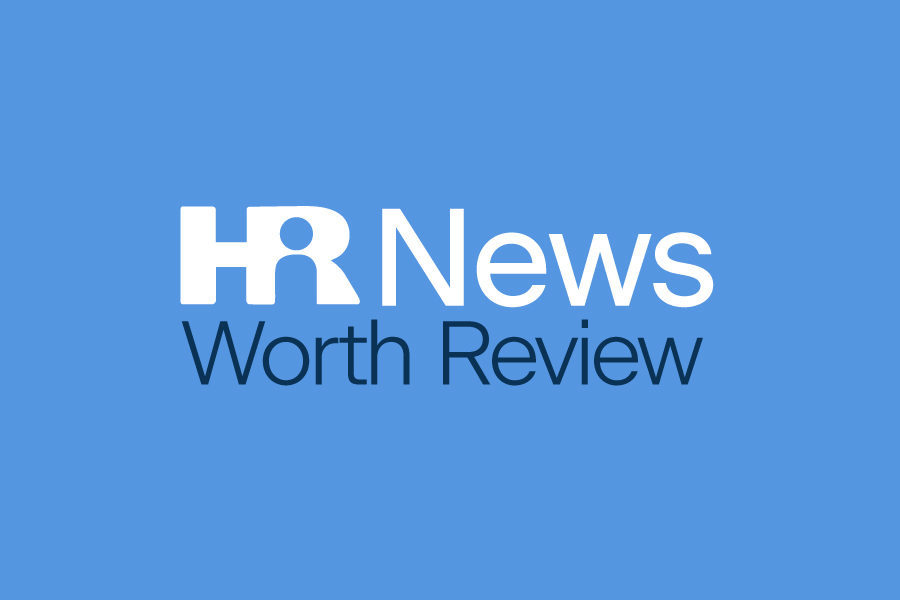Plans Must Submit Gag Clause Attestations by Dec. 31, 2023
On Feb. 23, 2023, the Departments of Labor, Health and Human Services and the Treasury (Departments) issued FAQs on the prohibition of gag clauses under the transparency provisions of the Consolidated Appropriations Act, 2021 (CAA). These FAQs require health plans and health insurance issuers to submit their first attestation of compliance with the CAA’s prohibition of gag clauses by Dec. 31, 2023.
Effective Dec. 27, 2020, the CAA prohibits health plans and issuers from entering into contracts with health care providers, third-party administrators (TPAs) or other service providers that would restrict the plan or issuer from providing, accessing or sharing certain information about provider price and quality and deidentified claims.
Plans and issuers must annually submit an attestation of compliance with these requirements to the Departments. The first attestation is due by Dec. 31, 2023, covering the period beginning Dec. 27, 2020, through the date of attestation. Subsequent attestations, covering the period since the last attestation, are due by Dec. 31 of each following year.
Prohibition on Gag Clauses
A gag clause is a contractual term that directly or indirectly restricts specific data and information that a health plan or issuer can make available to another party. Effective Dec. 27, 2020, the CAA generally prohibits group health plans and issuers offering group health insurance from entering into agreements with health care providers, TPAs or other service providers that include certain gag clause language.
- Providing provider-specific cost or quality-of-care information or data to referring providers, the plan sponsor, participants, beneficiaries or enrollees (or individuals eligible to become participants, beneficiaries or enrollees of the plan or coverage);
- Electronically accessing deidentified claims and encounter information or data for each participant, beneficiary or enrollee upon request and consistent with privacy rules under the Health Insurance Portability and Accountability Act (HIPAA), the Genetic Information Nondiscrimination Act (GINA), and the Americans with Disabilities Act (ADA); and
- Sharing information or data described in (1) and (2) above or directing such information to be shared with a business associate, consistent with applicable privacy rules.
For example, if a contract between a TPA and a health plan provides that the plan sponsor’s access to provider-specific cost and quality-of-care information is only at the discretion of the TPA, that contractual provision would be considered a prohibited gag clause.
| Plans and issuers must ensure their agreements with health care providers, networks or associations of providers, TPAs or other service providers offering access to a network of providers do not contain provisions that violate the CAA’s prohibition of gag clauses. |
Gag Clause Compliance Attestations
Health plans and issuers must annually submit an attestation of their compliance with the CAA’s prohibition of gag clauses to the Departments. The first attestation must be submitted no later than Dec. 31, 2023, covering the period beginning Dec. 27, 2020, through the date of the attestation. Subsequent attestations are due by Dec. 31 of each following year, covering the period since the last attestation. According to the Departments’ FAQs, health plans and issuers that do not submit their attestations by the deadline may be subject to enforcement action.
Covered Health Plans
The attestation requirement applies to fully insured and self-insured group health plans, including ERISA plans, non-federal governmental plans and church plans. Additionally, this requirement applies regardless of whether a plan is considered “grandfathered” under the ACA. However, plans that only provide excepted benefits and account-based plans, such as health reimbursement arrangements (HRAs), are not required to submit an attestation.
Relying on Issuers/TPAs to Submit Attestation
With respect to fully-insured group health plans, the health plan and the issuer are each required to submit a gag clause compliance attestation annually. However, when the issuer of a fully-insured group health plan submits a gag clause compliance attestation on behalf of the plan, the Departments will consider the plan and issuer to have satisfied the attestation submission requirement. Therefore, if the issuer for a fully-insured health plan provides the attestation, the plan does not also need to provide an attestation.
Employers with self-insured health plans can satisfy the gag clause compliance attestation requirement by entering into a written agreement under which the plan’s service provider, such as a TPA, will provide the attestation on the plan’s behalf. However, even if this type of agreement is in place, the legal requirement to provide a timely attestation remains with the health plan.
Employer Takeaway
Employers should ensure any contracts with TPAs or other health plan service providers offering access to a network of providers do not violate the CAA’s prohibition of gag clauses. Also, employers with fully insured or self-insured health plans should prepare to provide the compliance attestation by Dec. 31, 2023. As a reminder, if the issuer for a fully-insured health plan provides the attestation, the plan does not also need to provide an attestation and employers with self-insured health plans can enter into written agreements with their TPAs to provide the attestation, but the legal responsibility remains with the health plan.
The Departments launched a website through the Centers for Medicare and Medicaid Services for health plans and issuers to submit their gag clause compliance attestations.The Departments have also provided instructions for submitting the attestation, a system user manual, and a reporting entity Excel template for plans and issuers to submit the required attestation, all of which are available here.
New Form I-9 Includes Remote Verification Procedure for E-Verify Users
On Aug. 1, 2023, the U.S. Citizenship and Immigration Services (USCIS) published a new version of its Employment Eligibility Verification form, also known as Form I-9. Employers are required to use the new form exclusively beginning on Nov. 1, 2023.
The Form I-9 instructions also clarify procedures for employers that are eligible to utilize remote examination as an alternative to physical examination of employees’ documentation. Employers enrolled and participating in E-Verify may choose to examine documents remotely.
Dates of Use
The previous version of this form expired on Oct. 31, 2022, but USCIS instructed employers to continue using this expired form until the new version was published.
USCIS has indicated that employers may begin using the new form immediately and that use of the expired form (dated 10/19/2019) will be allowed through Oct. 31, 2023. Employers can find the publication date of Form I-9 in the lower left corner of the form.
Beginning Nov. 1, 2023, employers will need to use the newest version of the form. Employers that use previous versions of the form after this date will not be in compliance with federal employment eligibility verification requirements. Use of the revised Spanish version of the form is available for use in Puerto Rico only.
As outlined below, employers enrolled and participating in E-Verify may choose to examine documents remotely. However, employers that were not enrolled in E-Verify during the COVID-19 flexibilities must complete an in-person physical examination by Aug. 30, 2023.
Form I-9 Updates
USCIS has published a complete list of Form I-9 updates. Some of the most notable changes include:
- Sections 1 and 2 have been reduced to a single sheet; all previous fields remain, but some fields have been merged;
- The preparer/translator certification area has been moved to a standalone supplement that employers can use as necessary for initial verification or recertification;
- Section 3 (Reverification and Rehire) has been moved to a standalone supplement that employers can use as necessary; and
- The list of acceptable documents now includes some acceptable receipts, guidance and links to information on automatic extensions of employment authorization documentation.
The new Form I-9 includes updated instructions. These instructions have been condensed from 15 to eight pages and include additional definitions, streamlined processes, and an explanation of how to use the new check boxes to indicate when Form I-9 documents were examined remotely.
Remote Document Verification
Under current requirements, employers must physically inspect I-9 acceptable documents to certify their employees are authorized to work in the United States. However, the new form includes alternative remote verification procedures employers enrolled in E-Verify can use to comply with their Form I-9 obligations.
USCIS has published instructions for remote document verification, as outlined in the following sections.
E-Verify Participation Required
Employers must participate in E-Verify and be in good standing if they want to examine employee documents remotely. New E-Verify enrollees and users must complete an E-Verify tutorial that includes fraudulent document awareness training. Existing employers already enrolled in E-Verify have access to this tutorial and may retake it at any time.
E-Verify employers are in good standing if they:
- Are enrolled in E-Verify with respect to all hiring sites that use the alternative procedure to examine documents remotely;
- Use E-Verify to confirm the employment eligibility of newly hired employees in the United States; and
- Comply with all other requirements of the E-Verify program.
Remote Examination of Documents Procedures
To comply with procedures for the remote examination of documents, employers must:
- Examine copies (front and back, if the document is two-sided) of Form I-9 documents or an acceptable receipt to ensure that the documentation presented reasonably appears to be genuine and relates to the employee;
- Conduct a live video interaction with the individual presenting the document(s) to ensure that the documentation reasonably appears genuine and relates to the individual. The employee must first transmit a copy of the document(s) to the employer and then present the same document(s) during the live video interaction; and
- Retain a clear and legible copy of the documentation (front and back if the documentation is two-sided).
In addition, employers must indicate that they used an alternative procedure on Form I-9 by:
- Checking the box on the Form I-9 dated 08/01/2023; the box indicates that they used an alternative procedure in the Additional Information field in Section 2; or
- Annotating the Form I-9 dated 10/21/2019, with “Alternative Procedure” in the Additional Information field in Section 2.
Open Enrollment 2024—Checklists for Plan Changes and Benefit Notices
To get ready for open enrollment, employers who sponsor group health plans should be aware of the legal changes affecting the design and administration of their health plans for plan years beginning on or after Jan. 1, 2024. These changes include limits that are adjusted for inflation each year, such as the Affordable Care Act’s (ACA) affordability percentage and cost-sharing limits for high deductible health plans (HDHPs). Employers should review their health plan’s design to confirm that it has been updated, as necessary, for these changes.
In addition, any changes to a health plan’s benefits for the 2024 plan year should be communicated to plan participants through an updated summary plan description (SPD) or a summary of material modifications (SMM).
Health plan sponsors should also confirm that their open enrollment materials contain certain required participant notices, when applicable, such as the summary of benefits and coverage (SBC). Some participant notices must also be provided annually or upon initial enrollment. To minimize costs and streamline administration, employers should consider including these notices in their open enrollment materials.
Please check out our Open Enrollment Checklist here and our Benefit Notice Checklist here.





